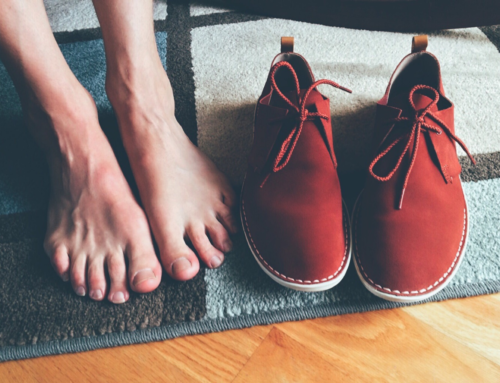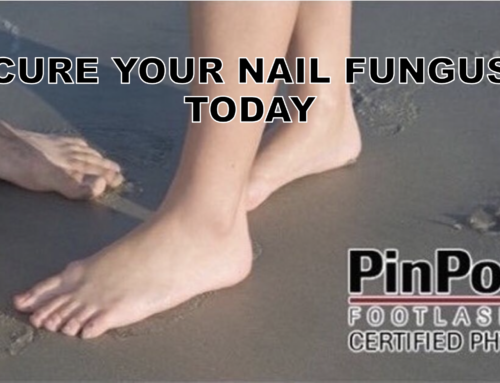Toenail fungus, also known as onychomycosis, is a common nail condition that affects people of all ages. For residents of Morgan Hill, CA, understanding how to identify, prevent, and treat toenail fungus is essential, especially if you enjoy outdoor activities or regularly wear sandals.
What Causes Toenail Fungus?
Toenail fungus often begins as a minor infection caused by fungi such as molds, yeasts, or dermatophytes. It can also result from untreated athlete’s foot. Fungi thrive in warm, moist environments like sweaty shoes, locker rooms, communal showers, and swimming pools.
Several factors increase the likelihood of developing toenail fungus:
-
Age: Nails naturally thicken as we age, making them more susceptible to infection.
-
Medical Conditions: Diabetes, circulatory problems, or weakened immune systems increase risk.
-
Footwear & Hygiene: Wearing tight shoes, not changing socks regularly, or sharing footwear can contribute to infection.
-
Nail Trauma: Injuries like stubbing your toe or cracks in the nail make it easier for fungus to enter the nail bed.

Signs and Symptoms
Early detection is key to successful treatment. Toenail fungus may initially appear as a small white dot or yellow discoloration, but symptoms worsen over time. Look out for:
-
Thickened or brittle nails
-
Yellow or brown discoloration
-
Crumbling along the edges
-
Foul odor
-
Nail separation from the nail bed
-
Distorted or deformed nail shape
In severe cases, the nails may become so thick and hard that trimming at home becomes difficult.
How to Manage Hard and Thick Toenails
Hard and thick nails can make proper grooming challenging. Softening your nails at home can help:
-
Soak feet in warm water for 20–30 minutes daily to soften nails.
-
Apply nail softening creams to improve pliability.
-
Seek professional nail debridement from a podiatrist if nails are too thick to cut safely.
Softening the nails allows treatments to penetrate more effectively, enhancing the chance of fully eliminating the fungus.
Treatment Options
While over-the-counter topical creams and oral medications exist, they often have limited effectiveness or pose health risks:
-
Topical Treatments: These typically have a low cure rate because they cannot penetrate the nail bed completely.
-
Oral Medications: These may be more effective but can cause liver toxicity and require regular blood tests.
The Best Treatment: PinPointe Laser Therapy
For residents of Morgan Hill, the FDA-approved PinPointe Laser is the most effective toenail fungus treatment available.
-
High Cure Rate: Targets the fungus directly under the nail for maximum effectiveness.
-
Painless and Safe: No recovery time, no side effects, and no need for anesthesia.
-
Quick: Typically requires only one session to eliminate the infection.
Laser treatment also allows you to continue daily activities immediately after the procedure. Combined with proper post-treatment care, it offers the best chance of restoring healthy, clear nails.
Preventing Toenail Fungus
To reduce your risk of reinfection:
-
Keep feet clean and dry.
-
Wear breathable shoes and moisture-wicking socks.
-
Avoid walking barefoot in public areas.
-
Disinfect nail clippers and tools regularly.
-
Treat athlete’s foot promptly to prevent spread.
When to See a Podiatrist
If you notice thick, discolored, or foul-smelling nails, it’s important to consult a licensed podiatrist. Early intervention improves treatment outcomes and prevents the infection from spreading to other nails.

Fun Things to Do in Morgan Hill, CA
Located in the southern part of Silicon Valley, Morgan Hill, California, is a vibrant city surrounded by rolling hills, vineyards, and scenic open spaces. Known for its small-town charm combined with modern amenities, Morgan Hill is a great destination for both relaxation and adventure. Whether you’re in town for an appointment or planning a weekend visit, there are plenty of fun things to do in and around Morgan Hill.
Explore the Outdoors
Morgan Hill is surrounded by natural beauty, making it an excellent spot for outdoor enthusiasts.
-
Anderson Lake County Park – A favorite for hiking, fishing, and picnicking. Although water levels can vary, the surrounding trails and scenic views make it worth a visit year-round.
-
Henry W. Coe State Park – California’s largest state park in the Bay Area, offering rugged trails, camping, and backcountry adventures. Perfect for hikers, mountain bikers, and anyone who loves unspoiled wilderness.
-
Uvas Canyon County Park – Known for its waterfalls and lush greenery, this park offers shaded trails and tranquil streams—ideal for a peaceful hike.
-
Community Parks – Local favorites like Community Park and Galvan Park provide playgrounds, sports fields, and picnic areas for family outings.
With so many options, Morgan Hill makes it easy to combine relaxation with outdoor fun.
Savor Wine Country and Local Flavors
Morgan Hill is part of the Santa Clara Valley wine region, making it a destination for wine lovers.
-
Local Wineries – Explore family-owned vineyards and tasting rooms such as Guglielmo Winery or Clos LaChance Winery, both known for award-winning wines and beautiful views.
-
Downtown Morgan Hill Dining – A mix of restaurants ranging from upscale Californian cuisine to international flavors. Farm-to-table dining is popular, and many restaurants use fresh, locally sourced ingredients.
-
Farmers’ Markets – Seasonal markets offer fresh produce, artisanal goods, and a chance to experience the community’s agricultural roots.
Food and wine are an essential part of the Morgan Hill experience, and visitors are sure to find flavors they love.
Enjoy Arts and Culture
While Morgan Hill is a smaller city, it embraces arts and culture through local venues and community events.
-
Morgan Hill Community Playhouse – A historic building that hosts plays, musicals, and community performances throughout the year.
-
Local Festivals – Annual events like the Mushroom Mardi Gras Festival celebrate the area’s agricultural history with food, entertainment, and family fun.
-
Public Art and Galleries – Murals and small art spaces around town showcase the creativity of local artists.
These cultural experiences highlight the city’s community spirit and unique character.
Shopping and Family Fun
Morgan Hill provides a variety of shopping and family-friendly attractions.
-
Downtown Morgan Hill – Boutique shops, cafés, and specialty stores line the charming downtown streets, making it a great place for strolling and shopping.
-
Family Recreation – Bowling alleys, local sports leagues, and recreational facilities ensure there’s something fun for kids and adults alike.
-
Nearby Attractions – With San Jose and Gilroy just a short drive away, families can easily enjoy larger attractions like Gilroy Gardens Family Theme Park or shopping at Gilroy Premium Outlets.
A Welcoming Destination
Morgan Hill combines outdoor adventure, fine dining, wine country experiences, and small-town charm, all within reach of Silicon Valley and the Bay Area. Whether you’re hiking in a state park, enjoying a wine tasting, attending a festival, or strolling downtown, Morgan Hill offers something for everyone.
From scenic trails and wineries to family-friendly parks and cultural events, Morgan Hill is a destination where relaxation and exploration meet.
Take Action Today
If you suspect you have toenail fungus in Morgan Hill, CA, don’t wait. Contact us at 1-(800) 672-0625 to schedule a consultation with a licensed nail doctor at one of our 150+ locations nationwide. With the PinPointe Laser, you can regain healthy, beautiful nails safely and effectively.




